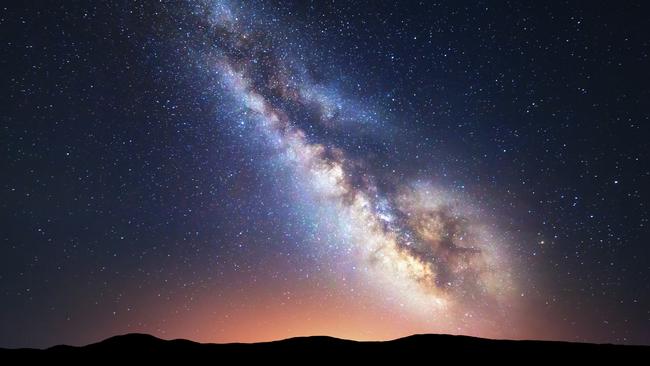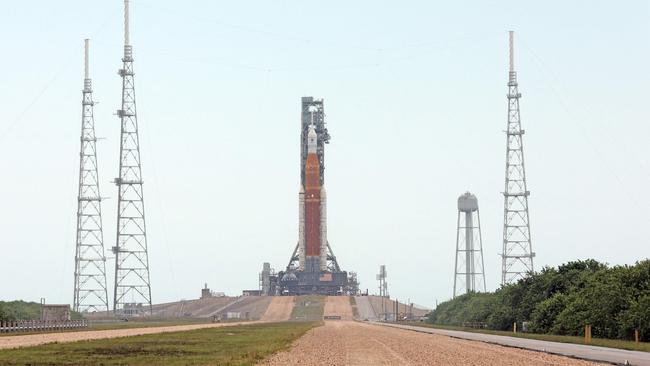How the Top End’s rocket launches will work and what will happen next
Rockets launched from Arnhem Land will fly 250km to 300km into space and monitor stars light-years from Earth. FIND OUT HOW IT WILL WORK
Northern Territory
Don't miss out on the headlines from Northern Territory. Followed categories will be added to My News.
IT HAS the potential to be the Territory’s version of Cape Canaveral – the famous space centre where NASA has launched dozens of space missions.
Teams of NASA scientists are right now preparing three rockets ahead of launches scheduled between June 26 and July 12 from the Arnhem Space Centre in Nhulunbuy.
The three rockets will study distant stars and are hoped to be the first of many from the Top End, with the centre’s owners already talking of expansion plans for later this year and up to 50 rocket launches per year.
Ahead of the launches, the NT News wanted to answer common questions about how the rockets work and what it will mean for the Northern Territory.
To help, we spoke with Equatorial Launch Australia’s (ELA) finance and commercial general manager Russell Shaw.
ELA have been contracted by NASA to launch the rockets from their space centre.

How do the rockets work?
The three rockets are 13m tall and will be launched from a pad at the centre.
They will race upwards at up to 500m a second and will only be visible from the ground for 10 seconds.
Parts of the rocket containing fuel will detach once empty and the payload of scientific data will fall back to earth and land safely with a parachute.
Overall, each rocket will only fly for 15 minutes.
“It goes a pretty long way in a short space of time,” Mr Shaw says.
Will the rockets go into space?
Yes, but only briefly.
The rockets will exit the atmosphere, flying 250km to 300km above sea level before crashing back down to earth.
They are ‘suborbital’ rockets, meaning they won’t go into orbit like a regular satellite.
Instead, they’ll fly back down to earth.
Crucial data will be tracked by the NASA teams and retrieved with the help of Traditional Owners and rangers once they’ve parachuted back onto the ground, somewhere in Arnhem Land.
“These rocket launches are going to be going in a southwestern trajectory, into Arnhem Land and so clearly there’s radar and tracking systems that we’ve got on site,” Mr Shaw says.

What will the rockets study?
Two American universities will use the data recorded from the rockets.
Mr Shaw says two of the rockets will study the stars nearest to our own solar system, Alpha Centuri A and B.
The third rocket will study x-ray light from interstellar space.
The rocket launches are necessary because the observations can only be made from the Southern Hemisphere.
What is significant about these launches?
They represent Australia’s first commercial rocket launches, opening up the Northern Territory and Australia to a cutting-edge new industry.
The aerospace industry has the potential to create high-paying jobs in key science and engineering fields.
“Being commercial means we can be more nimble and agile,” Mr Shaw says.
Why did they pick a remote part of the Top End for these launches?
Mr Shaw explains that the earth is spinning fastest at the Equator, so launching from Northern Australia means rockets go faster than if they were to be launched further south.
“That means that they burn less fuel in getting there and that becomes increasingly important as you increase your payload and you go into deeper space, or missions to the moon, for example,” Mr Shaw says.
He adds that the remote East Arnhem location is relatively free from air traffic so they can carry out launches without interfering with aircraft and airports.
Despite having to contend with cyclones and crocodiles, Mr Shaw says the space centre can operate year-round.
“If you’re launching eastwards over the Bay of Carpentaria, that’s a very low maritime traffic region and there’s very little air traffic as well,” he says.
“We’ve got cyclone-resistant dome roofs across the Payload Integration Facility and the Rocket Motors Storage Bay.”

What’s next after these three launches?
Equatorial Launch Australia already has plans in motion for ‘phase two’ of the Arnhem Space Centre, involving a second launch pad adjacent to the existing one.
Mr Shaw says existing space centres across the globe are already at capacity and he hopes the new facility will be able to take over some launches, such as Rocket Labs and Astra.
Overall, the Arnhem Space Centre could cater for up to 50 launches per year.
“So right now … our team is around 15 or 16. We’re looking to grow that to 70,” Mr Shaw says.
“And clearly as the site gets bigger, we will look to have around 20 to 25 people on site permanently, with all these customers coming in.”





